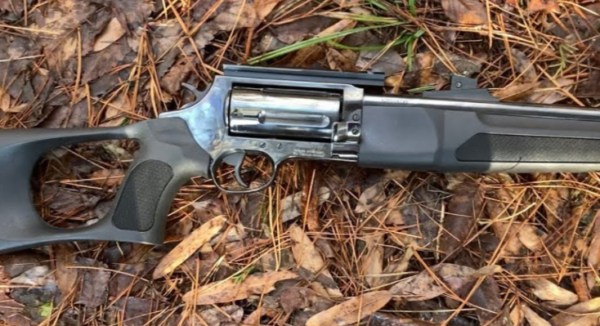Hi dear visitor welcome to our blog.
Glock 21 Gen 4 is one of the best brands in the world of guns.
But some people face problems with this model.
In this guide, we explain 15 common problems of this model with unique solutions. So let’s start now.
Glock 21 Gen 4 Problems

While the Glock 21 Gen 4 is generally well-regarded, a few common issues have been highlighted by users.
Some have reported issues with the recoil spring assembly, which may lead to cycling problems. Others have mentioned the gun’s large grip size as a potential problem for people with smaller hands.
Finally, though the Glock 21 Gen 4 is designed to handle .45 ACP ammunition, some users have reported feed issues with certain brands or types of this ammo.
1. Excessive Recoil
Cause
The excessive recoil in Glock 21 Gen 4 is primarily due to the .45 ACP round it uses, which is more powerful and thus generates more recoil than other rounds.
Another contributing factor is the lightweight frame of the Glock, which absorbs less recoil energy.
The combination of a powerful round and lightweight frame results in noticeable recoil.
Solution
To reduce excessive recoil, one effective solution is to use a recoil reduction system.
This system uses a heavier guide rod and a stronger recoil spring to absorb more energy from the fired round.
Alternatively, one can also use low-recoil ammunition designed specifically to produce less recoil.
Using a recoil reduction system or low-recoil ammunition can significantly mitigate the excessive recoil experienced with Glock 21 Gen 4.
2. Uncomfortable Grip Size
Cause
The main cause of an uncomfortable grip size often stems from using equipment or tools that are not tailored to an individual’s hand size.
This can lead to strain, discomfort, and in some cases, repetitive strain injuries.
Selecting equipment without considering the user’s hand size can result in decreased performance and potential health risks.
Solution
The solution to an uncomfortable grip size is to choose equipment or tools that are appropriate for the user’s hand size.
This might require trying out several different options before finding the right fit. Implementing ergonomic designs can also help to alleviate discomfort.
Adopting an individually tailored approach and emphasizing ergonomics can significantly enhance user comfort and performance while minimizing health risks.
3. Ejection Issues
Cause
Ejection issues often stem from a misaligned or worn-out ejector component. This mechanical part is responsible for removing the cartridge from the system after it has been fired.
Over time, repetitive use can cause wear and tear, leading to malfunction or failure. The misalignment or depreciation of the ejector component can lead to significant ejection issues.
Solution
To rectify ejection issues, it’s important to regularly check and maintain your equipment, ensuring the ejector component is properly aligned and not excessively worn.
If necessary, replacing the ejector component can often solve the problem.
Regular maintenance and timely replacement of worn-out parts are crucial in preventing and resolving ejection issues.
4. Slide Lock Malfunctions
Cause
Slide lock malfunctions in firearms typically occur due to improper grip or worn-out parts.
An improper grip may hinder the slide from moving freely, causing it to lock up prematurely. Also, worn-out or damaged slide lock springs are a common culprit of such malfunctions.
Solution
To overcome slide lock malfunctions, ensure you’re maintaining a correct, firm grip on the firearm. Regular cleaning and inspection of parts can also help prevent such issues.
If the slide lock spring is damaged or worn out, a replacement part should be installed to maintain proper function.
5. High Bore Axis
Cause
A High Bore Axis refers to the height difference between the shooter’s grip and the center of the firearm’s barrel.
This configuration can cause increased muzzle rise due to the greater torque, making the firearm harder to control, particularly during rapid fire.
It is mainly a structural issue inherent in the design of the handgun.
Solution
The most effective solution to manage a High Bore Axis is through training and practice.
This includes mastering recoil management techniques such as proper grip, stance, and trigger control.
Besides, some shooters opt for firearms with a lower bore axis design to reduce muzzle rise.
Indeed, firearm selection and consistent practice are key to mitigating the challenges posed by a high bore axis.
6. Difficulty in Field Stripping
Cause
Field stripping can be challenging primarily due to the intricacy of firearm components and the need for specific tools.
Inexperience and lack of knowledge can also contribute to the difficulty involved.
Understanding the mechanical composition of the firearm and having the appropriate tools are critical to successful field stripping.
Solution
The solution to the difficulty in field stripping lies in comprehensive education and practice. Familiarizing oneself with the firearm’s components and their assembly is crucial.
Investing in a quality tool kit and practicing disassembly and reassembly under the supervision of an expert can significantly ease the process.
Training courses or online tutorials can be an excellent resource for beginners.
7. Magazine Release Problems
Cause
Often, magazine release problems can be traced back to two main causes: wear and tear and improper assembly.
Over time, the magazine release catch can wear down, leading to difficulties in locking and releasing the magazine.
Also, if the firearm isn’t correctly assembled, the magazine might not sit properly, causing release issues.
Solution
The solution to magazine release problems is usually straightforward. Regular maintenance and occasional parts replacement can mitigate issues related to wear and tear.
On the other hand, if the problem arises from improper assembly, ensure to follow the manufacturer’s guidelines meticulously during reassembly.
It’s always recommended to seek professional help in such situations to guarantee the integrity and safety of the firearm.
8. Pinching During Reload
Cause
Often, the cause of pinching during reloading is mishandling or misalignment of the firearm’s components.
Incorrect hand placement or rapid reloading without adequate control can lead to the skin getting caught (or pinched) in the firearm’s mechanics.
This often occurs when users are new to firearm usage or when they are handling unfamiliar firearms.
Solution
To prevent pinching during reload, users should focus on learning and practicing proper firearm handling techniques.
This includes correct hand placement, controlled reloading, and an understanding of the firearm’s mechanics.
Regular training and familiarity with the firearm can significantly reduce the risk of pinching during reloading.
It is always advisable to seek professional guidance if one is unsure about the proper handling techniques.
9. Inconsistent Trigger Feel
Cause
The inconsistency in trigger feel can be attributed primarily to wear and tear, lack of maintenance, or manufacturing defects.
Problems can arise from prolonged usage, inadequate cleaning, or factory faults, leading to an uneven trigger pull.
Solution
Addressing this issue involves a thorough inspection and regular maintenance.
Users should clean their triggers regularly, ensuring dust or residue isn’t affecting the mechanism.
If the problem persists, consulting a professional or seeking replacement parts might be necessary.
Regular cleaning, professional consultation, and considering replacement parts are key to resolving an inconsistent trigger feel.
10. Difficulty in Sight Alignment
Cause
Difficulty in sight alignment can often result from inadequate lighting conditions, poor eyesight, or sub-optimal equipment.
It primarily arises when the shooter is unable to align the front and rear sights of the firearm, creating an off-center sight picture.
This misalignment can drastically affect the accuracy of the shot, leading to misses or unintended targets being hit.
Solution
Overcoming sight alignment issues involves a combination of proper training, using well-maintained equipment, and potentially correcting any vision anomalies.
Regular practice under various lighting conditions can help improve sight alignment skills. Quality firearm equipment with clear and well-adjusted sights is also essential.
In addition, if poor vision is a factor, corrective lenses or laser eye surgery could significantly improve sight alignment ability.
Remember, consistent practice and proper equipment are key to overcoming sight alignment difficulties.
11. Barrel Hood Wear
Cause
The primary cause of barrel hood wear is prolonged use and improper maintenance.
The barrel hood, located at the top of a firearm’s barrel, often experiences friction from continual shooting, which can lead to wear and tear.
Regular cleaning and proper usage are essential in controlling the damage.
Solution
The solution to barrel hood wear primarily lies in carrying out regular maintenance and using high-quality lubricants.
Observing regular cleaning routines after each shooting session can minimize the damage.
However, in severe cases of wear, it’s advisable to replace the barrel hood with a new one. These measures can ensure your firearm’s longevity, efficiency, and safety.
12. Holster Fit Issues
Cause
Often, the primary cause of holster fit issues is a mismatch between the firearm and the holster.
For instance, a holster made for a smaller model might not accommodate a larger gun, causing insecure fitting or difficulty in drawing the weapon.
Fit issues may also arise from incorrect mounting or problems with the user’s attire.
Solution
The most effective solution to these issues is ensuring that the holster is specifically designed for the firearm model being used.
Additionally, regular practice with the holster can better acquaint the user with its mounting and drawing mechanism, reducing the likelihood of fit issues.
It’s crucial to always choose a holster designed to fit your firearm model.
Regular practice with the holster can significantly reduce fit issues. Make sure the holster mounts securely and comfortably with your usual attire.
13. Inadequate Factory Sights
Cause
Many firearms come equipped with factory sights that are often rudimentary and inadequate for precision shooting.
These sights are typically designed for mass production, focusing more on cost-effectiveness than accuracy.
As a result, they can often be imprecise, making them unsuitable for those seeking enhanced shooting performance.
These factory sights are designed with cost-cutting in mind. Their main drawback is their lack of precision, which hampers accuracy.
Solution
The best solution to this issue is investing in after-market sights that are specifically designed for precision.
These sights come in various styles and options such as red dot sights, telescopic sights, or laser sights, allowing for a customized shooting experience.
They offer improved accuracy, easier target acquisition, and better visibility in low-light conditions.
Investing in after-market sights significantly improves shooting precision. These sights are not only tailored to individual needs but also enhance visibility and target acquisition.
14. Problematic Aftermarket Parts Compatibility
Cause
The main cause of problematic aftermarket parts compatibility stems from the vast variety of parts produced by different manufacturers.
These parts, manufactured to generic specifications, might not perfectly fit every model or type of vehicle.
Low-quality production standards and the absence of specific customization can result in compatibility issues, often rendering these parts useless or potentially harmful to the vehicle’s overall function.
Solution
The optimal solution to this issue is rigorous quality control and adopting vehicle-specific designs for aftermarket parts.
Manufacturers should work closely with original car manufacturers to ensure the parts produced align with the design and performance specifications of specific vehicle models.
Investing in research and development, improving production standards, and ensuring stringent quality checks can significantly reduce the instances of aftermarket parts compatibility issues.
15. Chambering Issues
Cause
Chambering issues often originate from either incorrect or worn-out components.
Particularly, an improperly fitted barrel, use of incorrect caliber ammunition, or simply the natural wear and tear of parts over time can lead to such problems.
An essential step in prevention is to ensure regular maintenance and proper handling of firearms.
Solution
Resolving chambering issues can be a straightforward process. The first step is to correctly diagnose the problem: check the barrel, inspect the ammunition, and consider the age of the gun parts.
Replacing worn-out components, using the correct caliber ammunition, and conducting regular maintenance can effectively mitigate these issues.
It is imperative to remember that safety should always be the top priority; if unsure, the best course is to seek assistance from a firearms expert.
Conclusion
The interconnectedness of our global society necessitates a strong understanding and implementation of effective communication, technological literacy, and cultural competence.
As the world becomes increasingly interwoven, our ability to adapt and grow within this network of global interactions becomes essential.
These factors are not just advantageous but a necessity in the 21st century.
The key to future success lies in our capacity to learn, adapt, and apply knowledge in ever-evolving circumstances. This is the dynamic challenge and opportunity of our times.
FAQs
Is Glock 21 Gen4 a good gun?
Glock 21 Gen4 is considered a reliable firearm known for its robustness and advanced safety features, making it a popular choice among gun enthusiasts.
Why don’t people like Gen 4 Glocks?
Some users have reported issues with the recoil spring assembly in Gen 4 Glocks, which may contribute to a negative perception.
Are Glock 21 reliable?
Yes, the Glock 21 is recognized for its reliability, accuracy, and durability, which makes it a favored firearm for self-defense and law enforcement use.
What issues do Glocks have?
Some common issues with Glocks include trigger finger discomfort due to their unique trigger safety design and occasional problems with the recoil spring assembly.


As the founder and owner of the domain “mygunsgeek.com”, I bring to the table a deep passion for firearms, combined with a strong commitment to sharing this knowledge with a wider audience. With years of experience exploring the inner workings of various firearms, from pistols to rifles, I have cultivated a vast expertise in this field. This has enabled me to create a platform that serves as a trusted resource for gun enthusiasts, providing comprehensive reviews, advice, and insights into the latest trends and advancements. I am dedicated to ensuring that my content is both informative and engaging, helping my readers make informed decisions about their firearm choices. For any inquiries or suggestions, feel free to reach out to me at wwwfffwww117@gmail.com. Your feedback is invaluable in shaping the content and direction of mygunsgeek.com.


